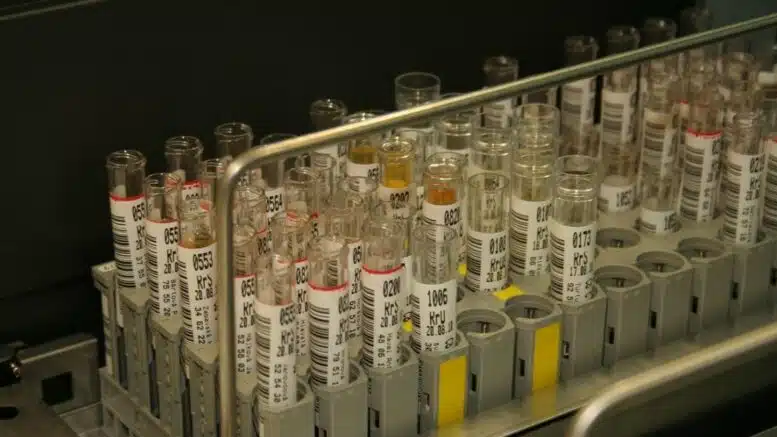Human bodily fluids like blood and urine are often used for research and teaching laboratories. But there are many limitations when using human bodily fluids, such as keeping learners and researchers from coming in contact with diseased ones. However, it’s impossible to eliminate the use of human body fluids since they are essential for research and teaching. The best way to keep the risks low is by replacing the human samples with synthetic urine.
However, it’s hard to replicate human samples perfectly. So far, there’s no effective protocol to create artificial urine with similar elements as human urine. Although there are two major protocols available for preparing artificial urine, none of the methods results in AU close to real urine in chemical composition.
There’s a new promising artificial urine protocol that is more reliable than the former formulas. We’ll look at how this new method, multi-purpose artificial urine (MP-AU), can mimic a healthy individual’s urine and what sets it apart from the two most common early protocols. We will also compare the three protocols based on Infrared Spectroscopy and urine samples from healthy humans.
Comparisons of Artificial Urine Protocols
Researchers from various fields like pharmacology, nephrology, urology, and dermatology have done numerous studies on AU specimens. As a result, several AU protocols have come forward. However, these formulations result in Au with different concentration, quantity, and composition and only suit certain purposes.
Generally, in most of the protocols, it was discovered that some key urine components like urea were missing and not ideal for use in place of human urine. Since there has not been a protocol with AU results correlating with real urine sampled from healthy individuals, there’s a need for a reliable AU protocol.
Below are two of the most cited AU formulas in the literature and their shortcomings.
AU Protocol By Chutipongtanate and Thongboonkerd (CT-AU)
Up to now, this AU formulation by Chutipongtanate and Thongboonkerd is one of the closest. The urine composition from this formula was determined in a study by Taylor and Curhan, and Cameron.
However, the researchers published values from CT-AU analyzed from post-menopausal women over 65. In Cameroon’s study, the control group’s average age is 49, with no known evaluation of the participant’s health status.
So, although the CT-AU formula is scientifically accurate, the hormonal status, age, and other factors greatly influence the urine composition. Thus, this formulation is not reliable.
AU Protocol By Brook and Keevil (BK-AU)
Another most cited protocol is by Brook and Keevil. This formulation relies on Altman’s in determining the AU components and their quantities. One of the components from this formulation is bicarbonate, which does not naturally occur in human urine. It is only found in urine from individuals with a pathological condition causing alkalinity in the urine.
Besides, the study did not confirm whether the AUs match those from healthy individuals. Because of this ambiguity, this formulation can’t be used in human clinical studies. There’s a need for a more reliable AU protocol that produces urine correlating with healthy human urine.
New Artificial Urine Protocol: Multi-Purpose Artificial Urine (MP-AU)
MP-AU is a practical and economical artificial urine formula that produces the closest to human urine. Research has been conducted using this method with results compared to human urine and the common AU protocols using Fourier Transform Infrared Spectroscopy (FTIR analysis) or Infrared Spectroscopy.
All artificial urine from other formulas displayed satisfactory physiological properties in Urinary specific gravity (SG) and pH. However, the infrared spectroscopy indicated differences among the CT-AU and BK-AU, with MP-AU having the closest components to healthy individuals’ urine.
Upon comparing the MP-AU and human urine spectra, there’s a good match in terms of peak positions and the number of peaks. Certain chemicals present in human urine like amino acids, nucleic acids, and proteins were avoided in the research. The objective was to mimic urine with the least chemicals to allow faster preparation of AU in larger volumes. As a result, the insignificant difference between the MP-AU and actual urine was caused by the missing compounds.
Another source of variation in the study might be age differences and ethnicity among the participants. But with over 90 compounds found in urine detected through NMR1 spectroscopy, MP-AU is the most effective protocol. The AU formulated is odorless, colorless, and doesn’t need special pre-treatments, making it the best for use in teaching.
Conclusion
The MP-AU offers a reliable way of formulating AU to replace the human urine used in clinical analysis since it shows a significant resemblance to human urine. This new method proves to be a useful AU protocol that is both practical and economical ideal for use in comparative experiments. More clinical assays will help to confirm the reliability of MP-AU in the future.
